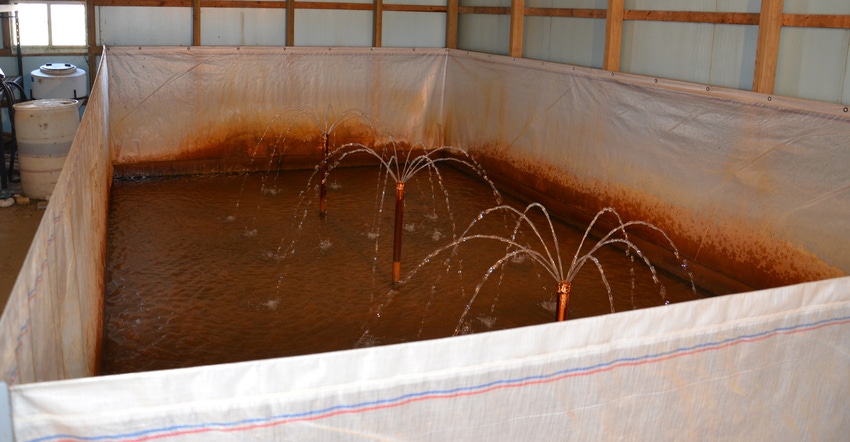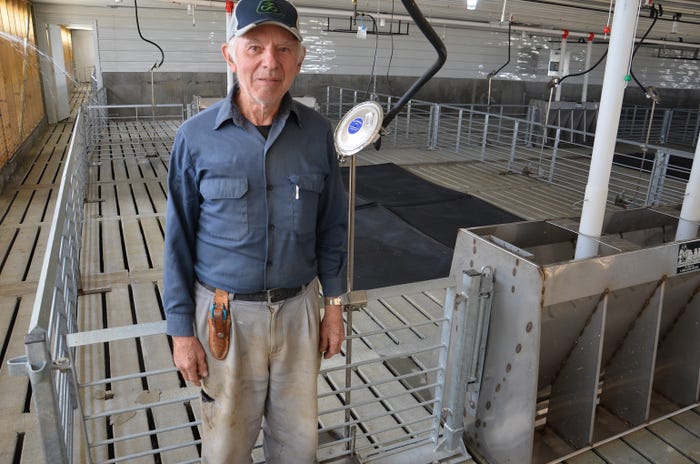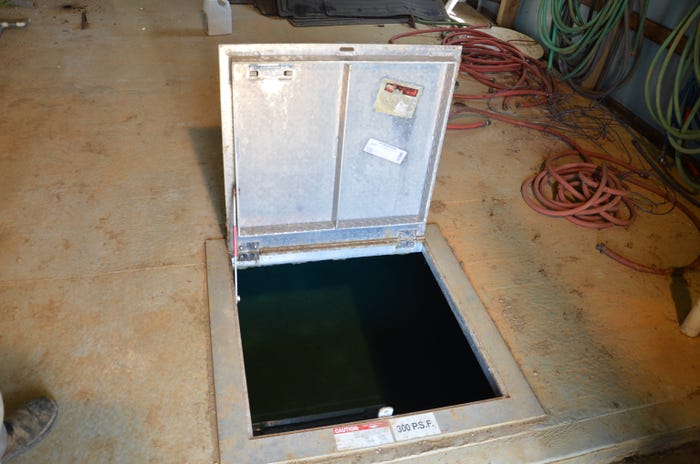
The small, white pole building near Wally Linneweber’s hog barns looks innocent enough from the outside. Your first guess is that it’s a storage building or maybe a small shop. You won’t be prepared for what you see inside.
Open the door and walk in. To your left is a large, contained water enclosure, taking up most of the building. You look over the edge of the sidewalls and see pipes spewing water out the top. OK, Wally, what is this?
“Our water has lots of iron, and we use this system to filter it out,” says Linneweber, Vincennes, Ind. “We built it several years ago, and it works very well.”
So how does it work? Basically, the enclosure contains several feet of different materials, including sand, that filter water coming from the well. Water is pumped through the pipes and spews across the filtration bed. Once filtered, water leaves the bed and collects in an underground storage area beneath the rest of the building. From there it is pumped to hog confinement barns around the farm.
Linneweber has several confinement barns, and he just erected a new wean-to-finish building for contract-feeding 4,400 pigs at a time. Take a virtual tour of the new building on this website tomorrow.
 TROUBLE-FREE WATER: Wally Linneweber wants water coming into this new wean-to-finish confinement building to be as low in iron as possible to prevent problems with rust buildup over time.
TROUBLE-FREE WATER: Wally Linneweber wants water coming into this new wean-to-finish confinement building to be as low in iron as possible to prevent problems with rust buildup over time.

Why filter water?
“See how clear water in the tank is after it has been filtered?” Linneweber asks, opening the lid. “We have far less problems with drinkers and waterers in our buildings when there is less iron in the water.”
It’s not just savings in maintenance costs and time that has convinced Linneweber that this system was a good investment. “When water nipples plug with rust and don’t work right, we get leaks,” he explains. “That results in more water in the pit. We haul out a lot more water than necessary. We want to haul manure from the pits, not excess water.
“This building has been a great investment. It really makes a difference.”
 LESS IRON: Water that has filtered through the filtration bed collects in this tank to be pumped to hog buildings on Linneweber’s farm.
LESS IRON: Water that has filtered through the filtration bed collects in this tank to be pumped to hog buildings on Linneweber’s farm.

About the Author(s)
You May Also Like




